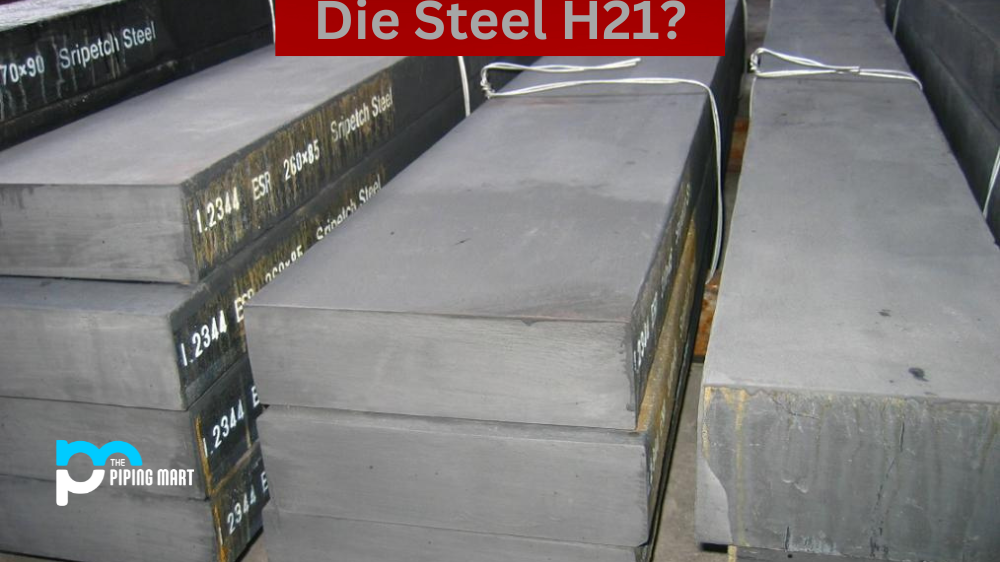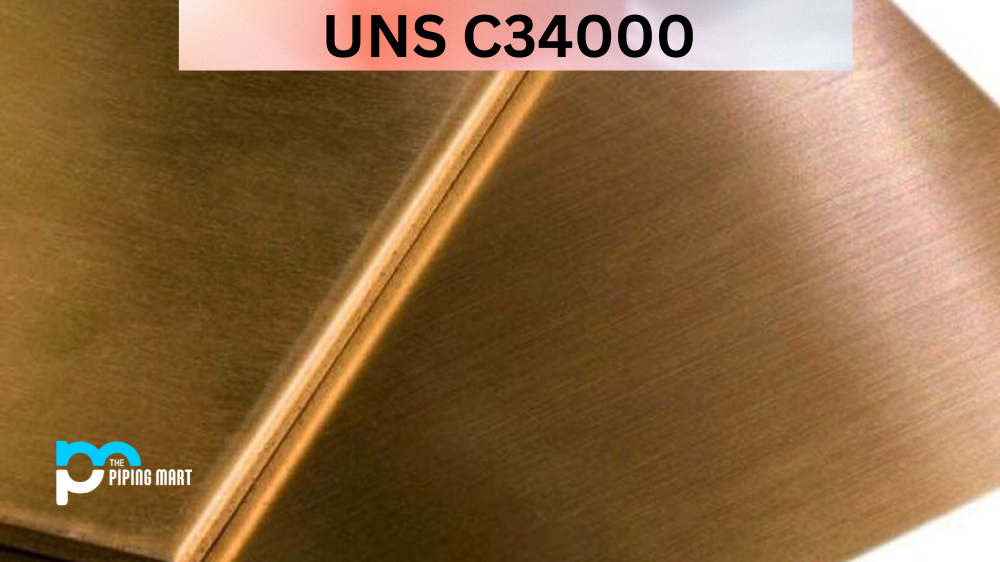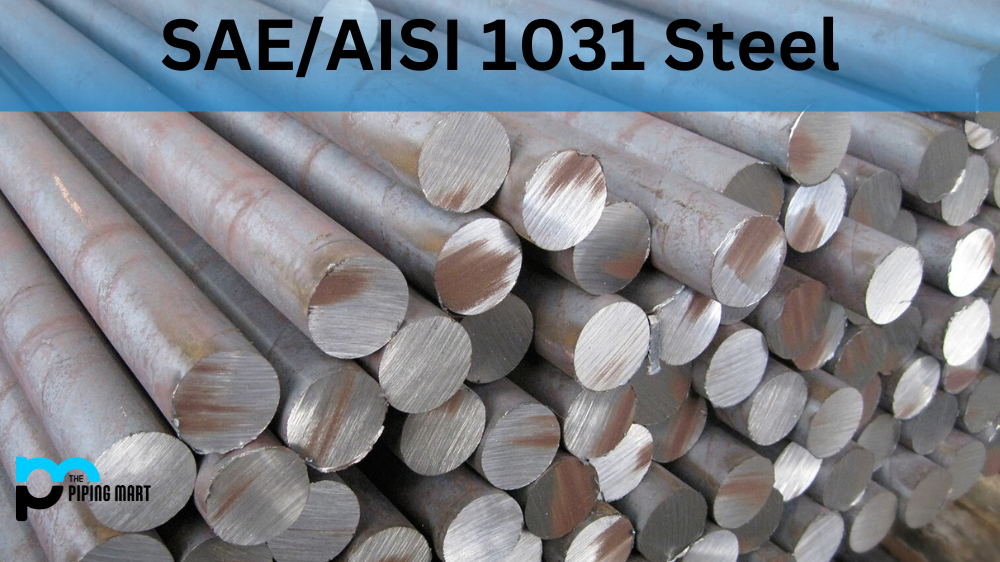UNS T20821 is a high-carbon, high-chromium steel used in the manufacturing of tooling and dies. It is known for its excellent wear resistance and fatigue strength, making it an ideal material for long-lasting tools. In this blog post, we will cover the composition, physical properties, uses corrosion resistance, heat resistance, heat treatment and machining of Die Steel H21.
H21 Tool Steel Composition
UNS T20821 consists primarily of chromium (Cr), tungsten (W), carbon (C), vanadium (V) and molybdenum (Mo). These elements combine to create steel with superior wear resistance and fatigue strength. The content of Cr gives the steel its excellent hardening ability, while the presence of W provides added toughness. The addition of V increases the tensile strength, while Mo further enhances the hardness.
| Element | Content (%) |
|---|---|
| C | 0.26-036 |
| Mn | 0.15-0.40 |
| Si | 0.15-0.50 |
| Cr | 3.00-3.75 |
| Ni | 0.3 |
| W | 8.50-10.00 |
| V | 0.30-0.60 |
| Cu | 0.25 |
| P | 0.03 |
| S | 0.03 |
H21 Tool Steel Chemical Properties
UNS T20821 is an incredibly useful metal alloy that boasts impressive mechanical and chemical properties. It is a hot-work tool steel characterized by its excellent thermal shock resistance, making it a perfect choice for highly specialized industrial applications. H21’s chemical makeup consists of elements such as chromium, vanadium, molybdenum, and manganese, which give the alloy extra heat resistance and durability. It also has high hardenability and strength levels, making it an excellent choice for creating dies and other tools that need to endure high temperatures or repetitive use. The chemical properties of Die Steel H21 make it especially versatile; this alloy can be used in combination with other metals or materials to customize it according to a variety of needs.
H21 Tool Steel Physical Properties
The physical properties of UNS T20821 are as follows: density 8.0g/cm3; melting point 1350℃; modulus of elasticity 205GPa; thermal expansion coefficient 15×10-6/K; electrical resistivity 0.58μΩ·m; thermal conductivity 40W/(m·K).
| Properties | Metric | Imperial |
|---|---|---|
| Density | 8.19 g/cm3 | 0.296 lb/in3 |
| Melting point | 1432°C | 2610°F |
H21 Tool Steel Mechanical Properties
UNS T20821 is a high-performance material renowned for its superior mechanical properties. In general, this type of steel has excellent wear resistance, good hardenability and a reasonable corrosion resistance rating. These qualities combine to make it highly suitable for uses as diverse as aircraft parts and die-casting components. Its superior toughness means it maintains lubricants well, making it optimal for use with difficult machining operations, such as in gear forming. With the right conditions and effective heat treatment, die steel H21 provides impressive strength and durability. All these features have made this type of alloy invaluable in many industrial applications, no matter what the demands may be.
| Properties | Metric | Imperial |
|---|---|---|
| Hardness, Rockwell C | 40.0 – 55.0 | 40.0 – 55.0 |
| Bulk modulus | 140 GPa | 20300 ksi |
| Shear modulus | 80.0 GPa | 11600 ksi |
| Poisson’s ratio (25°C) | 0.27-0.30 | 0.27-0.30 |
| Elastic modulus | 190-210 GPa | 27557-30458 ksi |
H21 Tool Steel Thermal Properties
| Properties | Metric | Imperial |
|---|---|---|
| CTE, linear | 12.4 μm/m°C | 6.89 μin/in°F |
| Thermal conductivity | 27.0 W/mK | 187 BTU-in/hr-ft2°F |
H21 Tool Steel Equivalents
- DIN 1.2581
- JIS SKD5
- B.S. BH 21
- UNI X 28 W O9 KU
- ASTM A681
- FED QQ-T-570
- SAE J437
- SAE J438
- UNS T20821
- AFNOR Z 30 WCV 9
H21 Tool Steel Uses
UNS T20821 is most commonly used in the manufacture of dies for stamping or forming processes such as forging or extrusion, as well as other tooling applications such as shear blades and punches. Its excellent wear resistance makes it ideal for these types of applications in which there is a need for repeated use over a long period of time without significant degradation in performance.
Corrosion Resistance
Due to its high chromium content, Die Steel H21 has excellent corrosion resistance when exposed to air or water. This makes it suitable for use in environments where there may be exposure to moisture or chemicals present in the atmosphere. It also has good weldability due to its low carbon content, which allows it to be welded without fear of cracking or other defects occurring during welding operations.
Heat Resistance
With its high chromium content, Die Steel H 21 offers excellent heat resistance up to 1300°C with little loss in toughness and strength at elevated temperatures when compared with other die steels available on the market today. This makes it an ideal choice for applications requiring high-temperature performance, such as hot forging processes or deep drawing operations where tooling needs to retain its integrity even after prolonged exposure to extreme temperatures.
Heat Treatment
Due to its relatively high carbon content, die steel requires proper heat treatment prior to use in order to maximize its performance characteristics, such as hardness and wear resistance, while maintaining good dimensional stability throughout its life cycle. This typically involves austenitizing at 1050°C followed by oil quenching and then tempering at 550°C before being cooled again in oil or air, depending on application requirements.
Machining
Due to its higher chromium content compared with other die steels available on the market today, machining can be more difficult than expected due to the work hardening effect that occurs during cutting operations resulting from abrasion between cutting tools and dies steel surface causing premature tool wear if not properly monitored throughout the machining process.
Conclusion:
Die steel h21 is an alloyed high-carbon, high-chromium steel used extensively in tooling and die manufacturing industries due to its superior wear resistance and fatigue strength when compared with other options available on the market today. Its combination of physical properties makes it ideal for long-lasting tooling applications that require repeated use over extended periods while still offering excellent corrosion, heat, machining, and weldability characteristics. Lastly, proper heat treatment must be performed prior to use in order to maximize all desired performance characteristics.

A passionate metal industry expert and blogger. With over 5 years of experience in the field, Palak brings a wealth of knowledge and insight to her writing. Whether discussing the latest trends in the metal industry or sharing tips, she is dedicated to helping others succeed in the metal industry.




